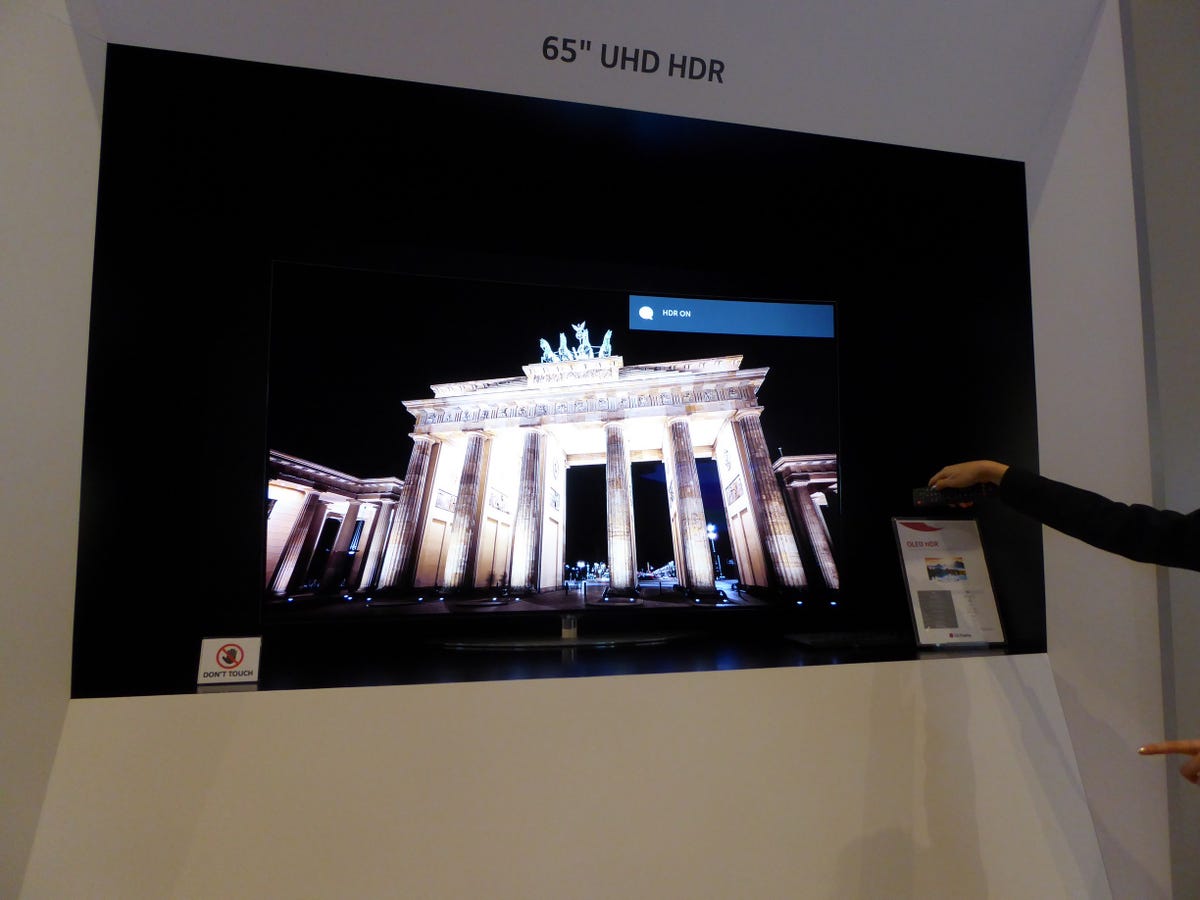

Now playing:
Watch this:
LG’s OLED HDR: the next generation of the best TV ever
1:20
LAS VEGAS — LG’s huge, hectic booth on the main floor of the Las Vegas Convention Center is packed tight with the newest OLED TVs, from flat to curved to flexible .
Meanwhile in LG Display’s quiet, private suite at the Bellagio, I got a glimpse of the future of OLED TV. And it was so bright, I gotta wear shades.
The 65-inch, curved, 4K OLED TV on display there looked a lot like the $10,000 version on sale now and the (hopefully somewhat cheaper) versions LG announced at the show. The main difference, according to LG Display’s Senior Manager of TV product planning, Chaewoo Choi, is its ability to deliver brighter highlights.
He said LGD had developed new materials for its WRGB OLED displays that allow higher efficiency, namely better light output from the same amount of power. The result is an increase in peak light output of highlights from about 500 nits (a measure of brightness) using the current technology to 800, an increase of 60 percent.

David Katzmaier/CNET
During the demo I saw LG’s reps toggled the HDR (high dynamic range) effect on and off and the difference was obvious: brighter highlights that made the image pop even more impressively than before. Meanwhile the TV still maintained the perfect black I love so much in current generations of OLED TVs. Even today OLED technically sports an infinite contrast ratio. I guess OLED HDR is even more infinite.
Back on the show floor, both Samsung and LG showed me private room demos of HDR technology in their SUHD and OLED TVs, respectively, and as always it looked very impressive. HDR provides a more obvious picture quality improvement than 4K resolution or wider gamut color, in my experience, and done right it comes closer than ever to how reality actually looks.
The key for displays is the ability to produce bright specular highlights, for example a burst of sunlight reflecting off metal armor or a flash of lightning. OLED, according to LG Display, is the perfect HDR technology because of its infinite contrast, which makes those highlights show up even better.
OLED’s disadvantage compared to LCD is that it can’t get as bright, especially compared with the LED-packed full-array local dimming models like the Samsung JS9500 , which the company says can reach 1000 nits in highlights. LCD’s disadvantage, as always, is that it can’t maintain as deep a black level as OLED.
The TVs of CES 2015 (pictures)






From what I saw, LG Display’s OLED HDR TV has the potential to make the best picture technology even better. Choi didn’t tell me when it would hit the market, but to me it seems like the natural next step in the development of OLED TV.




